-
 Bitcoin
Bitcoin $117500
2.15% -
 Ethereum
Ethereum $3911
6.19% -
 XRP
XRP $3.316
10.79% -
 Tether USDt
Tether USDt $1.000
0.01% -
 BNB
BNB $787.2
2.24% -
 Solana
Solana $175.2
4.15% -
 USDC
USDC $0.9999
0.00% -
 Dogecoin
Dogecoin $0.2225
8.40% -
 TRON
TRON $0.3383
0.28% -
 Cardano
Cardano $0.7868
6.02% -
 Stellar
Stellar $0.4382
9.34% -
 Hyperliquid
Hyperliquid $40.92
7.56% -
 Sui
Sui $3.764
7.63% -
 Chainlink
Chainlink $18.48
10.66% -
 Bitcoin Cash
Bitcoin Cash $582.1
1.88% -
 Hedera
Hedera $0.2601
6.30% -
 Avalanche
Avalanche $23.33
4.94% -
 Ethena USDe
Ethena USDe $1.001
0.02% -
 Litecoin
Litecoin $122.3
2.04% -
 UNUS SED LEO
UNUS SED LEO $8.969
-0.27% -
 Toncoin
Toncoin $3.339
0.86% -
 Shiba Inu
Shiba Inu $0.00001287
4.30% -
 Uniswap
Uniswap $10.43
7.38% -
 Polkadot
Polkadot $3.861
5.08% -
 Dai
Dai $1.000
0.02% -
 Bitget Token
Bitget Token $4.513
3.41% -
 Monero
Monero $267.7
-6.18% -
 Cronos
Cronos $0.1499
4.14% -
 Pepe
Pepe $0.00001110
5.15% -
 Aave
Aave $284.9
8.28%
How to calculate the transaction fee of Gate.io contract? What is the difference between market maker and taker fees?
Gate.io's contract fees depend on trading volume, contract type, and whether you're a maker or taker; higher volumes and maker orders reduce fees.
May 04, 2025 at 01:56 pm
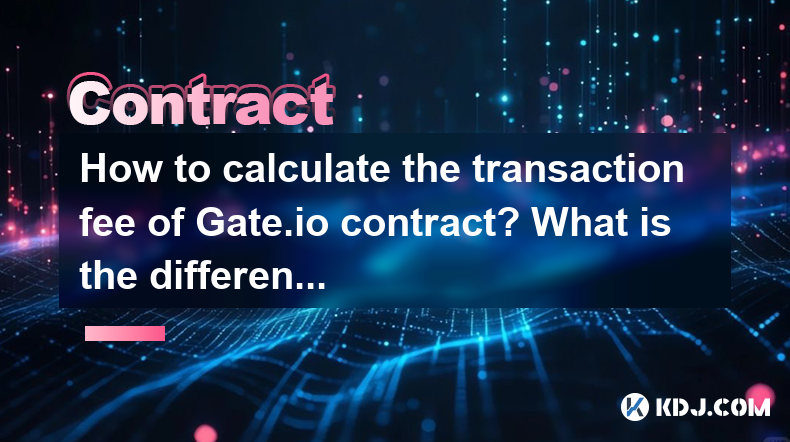
Understanding Gate.io Contract Transaction Fees
Gate.io is a popular cryptocurrency exchange platform that offers a variety of trading options, including futures and perpetual contracts. When trading these contracts, it's essential to understand how transaction fees are calculated and the difference between market maker and taker fees. This article will delve into these topics to help you navigate the Gate.io platform more effectively.
Calculating Transaction Fees on Gate.io Contracts
To calculate the transaction fee for Gate.io contracts, you need to consider several factors. The primary components include the type of contract you are trading, your trading volume, and whether you are acting as a market maker or a taker.
Type of Contract: Gate.io offers different types of contracts, such as futures and perpetual contracts. Each type may have different fee structures.
Trading Volume: Your trading volume over a specific period (usually 30 days) can affect the fee rate you are charged. Higher volumes typically result in lower fees.
Maker or Taker: The role you play in the transaction (maker or taker) significantly impacts the fee you pay. We will discuss this in more detail later.
To calculate the fee, you can use the following formula:
[ \text{Transaction Fee} = \text{Trade Amount} \times \text{Fee Rate} ]
The fee rate is determined by your trading volume and whether you are a maker or a taker. You can find the specific fee rates on the Gate.io website under the fee schedule section.
Steps to Calculate Your Transaction Fee
To calculate your transaction fee on Gate.io, follow these steps:
Log into your Gate.io account: Ensure you are logged into your account to access your trading history and volume.
Check your trading volume: Navigate to the "Fee Schedule" section to see your 30-day trading volume. This will help you determine your applicable fee rate.
Identify the contract type: Determine whether you are trading futures or perpetual contracts, as the fee rates may differ.
Determine your role: Decide if you will be a maker or a taker in the transaction. This will affect the fee rate you are charged.
Calculate the fee: Use the formula mentioned above to calculate your transaction fee based on the trade amount and the applicable fee rate.
Difference Between Market Maker and Taker Fees
Understanding the difference between market maker and taker fees is crucial for optimizing your trading strategy on Gate.io. Here's a detailed explanation of each:
Market Maker Fees
Definition: A market maker is a trader who places an order that does not immediately get filled, thereby adding liquidity to the order book.
Fee Structure: Market makers typically receive a lower fee rate or even a rebate for adding liquidity to the market. On Gate.io, market makers might enjoy a fee rate as low as 0.01% or even receive a rebate.
Example: If you place a limit order to buy Bitcoin at $30,000 and it does not get filled immediately, you are acting as a market maker. If the order is eventually filled, you will pay the maker fee rate.
Taker Fees
Definition: A taker is a trader who places an order that gets filled immediately, thereby removing liquidity from the order book.
Fee Structure: Takers usually pay a higher fee rate compared to makers because they are taking liquidity from the market. On Gate.io, taker fees can be around 0.06%.
Example: If you place a market order to buy Bitcoin at the current market price, and it gets filled immediately, you are acting as a taker. You will pay the taker fee rate for this transaction.
Impact of Trading Volume on Fees
Your trading volume plays a significant role in determining the fee rates you pay on Gate.io. The platform uses a tiered fee structure, where higher trading volumes result in lower fees. Here's how it works:
Volume Tiers: Gate.io categorizes traders into different volume tiers based on their 30-day trading volume. Each tier has a specific fee rate for both maker and taker orders.
Example: If your 30-day trading volume is between $1 million and $5 million, you might fall into a tier with a maker fee of 0.02% and a taker fee of 0.05%. If your volume increases to over $5 million, you might move to a tier with even lower fees.
Checking Your Volume: You can check your current trading volume and the corresponding fee tier on the Gate.io website under the "Fee Schedule" section.
Strategies to Minimize Transaction Fees
To minimize your transaction fees on Gate.io, consider the following strategies:
Increase Trading Volume: By increasing your trading volume, you can move to a higher tier with lower fees. This can be achieved by trading more frequently or with larger amounts.
Use Limit Orders: Placing limit orders instead of market orders can help you act as a market maker, which typically results in lower fees.
Take Advantage of Promotions: Gate.io occasionally offers promotions and fee discounts. Keep an eye on their announcements to take advantage of these opportunities.
Trade During Off-Peak Hours: Trading during less busy times can increase the likelihood of your limit orders being filled as a maker, thus reducing your fees.
Frequently Asked Questions
Q1: Can I reduce my transaction fees by using Gate.io's native token, GT?
A1: Yes, holding and using Gate.io's native token, GT, can help reduce your transaction fees. Gate.io offers a fee discount for users who pay their fees with GT. The discount rate varies based on the amount of GT you hold, with higher holdings resulting in larger discounts.
Q2: Are there any additional fees I should be aware of when trading contracts on Gate.io?
A2: In addition to the transaction fees, you should be aware of potential funding fees for perpetual contracts. Funding fees are periodic payments made between long and short positions to ensure the contract price remains close to the underlying asset's market price. These fees are not part of the transaction fee but can impact your overall trading costs.
Q3: How often does Gate.io update its fee schedule?
A3: Gate.io typically updates its fee schedule periodically, often in response to changes in market conditions or platform policies. It's a good practice to check the fee schedule regularly to stay informed about any changes that might affect your trading costs.
Q4: Can I see my transaction fees before executing a trade on Gate.io?
A4: Yes, Gate.io provides an estimated transaction fee before you execute a trade. When you place an order, the platform will display the estimated fee based on your current trading volume and whether you are acting as a maker or a taker. This allows you to see the cost before confirming the trade.
Disclaimer:info@kdj.com
The information provided is not trading advice. kdj.com does not assume any responsibility for any investments made based on the information provided in this article. Cryptocurrencies are highly volatile and it is highly recommended that you invest with caution after thorough research!
If you believe that the content used on this website infringes your copyright, please contact us immediately (info@kdj.com) and we will delete it promptly.
- Tron's Sell-Off Spurs Altcoin Shift: What's Next for TRX?
- 2025-08-08 08:30:12
- Sleep Token's US Takeover: Thornhill Rides the 'Even In Arcadia' Wave
- 2025-08-08 08:30:12
- FTT Token's Wild Ride: Creditor Repayments vs. Market Drop - A New Yorker's Take
- 2025-08-08 07:10:12
- Floki Crypto Price Prediction: Riding the Robinhood Rocket or Just a Meme?
- 2025-08-08 07:15:12
- EigenLayer, Restaking, and Ethereum: Navigating the Hype and the Hazards
- 2025-08-08 06:30:12
- Super Bowl 59: Jon Batiste to Jazz Up the National Anthem
- 2025-08-08 06:30:12
Related knowledge

What are the specific maker and taker fees on KuCoin Futures?
Aug 08,2025 at 08:28am
Understanding Maker and Taker Fees on KuCoin FuturesWhen trading on KuCoin Futures, users encounter two primary types of fees: maker fees and taker fe...
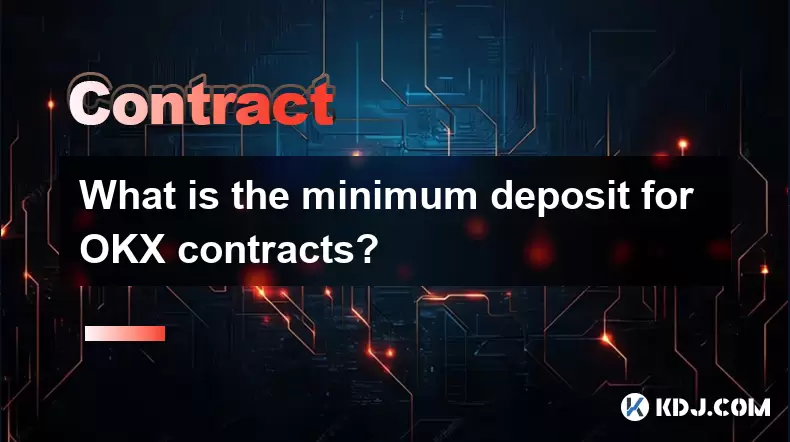
What is the minimum deposit for OKX contracts?
Aug 08,2025 at 07:00am
Understanding OKX Contract Trading BasicsOKX is one of the leading cryptocurrency derivatives exchanges, offering a wide range of perpetual and future...
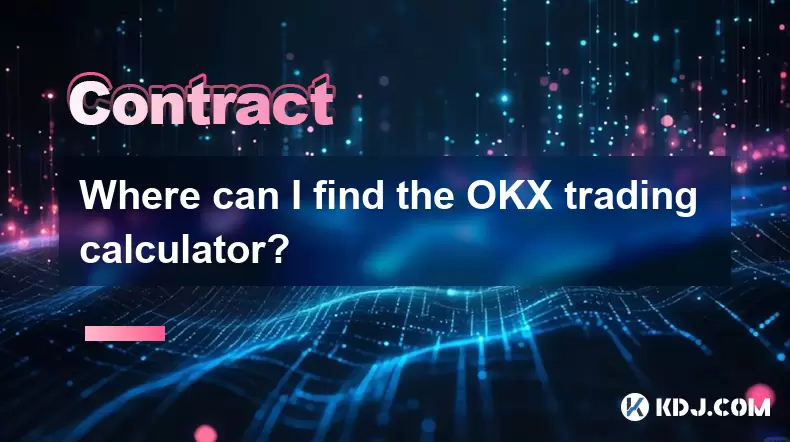
Where can I find the OKX trading calculator?
Aug 08,2025 at 07:49am
Understanding the OKX Trading Calculator FunctionalityThe OKX trading calculator is a powerful analytical tool designed to assist traders in estimatin...
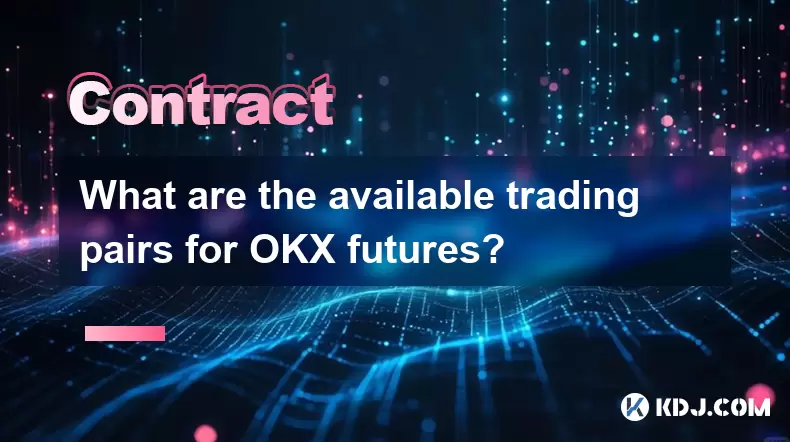
What are the available trading pairs for OKX futures?
Aug 08,2025 at 08:49am
Understanding OKX Futures Trading PairsOKX is one of the leading cryptocurrency derivatives exchanges, offering a wide range of futures trading pairs ...
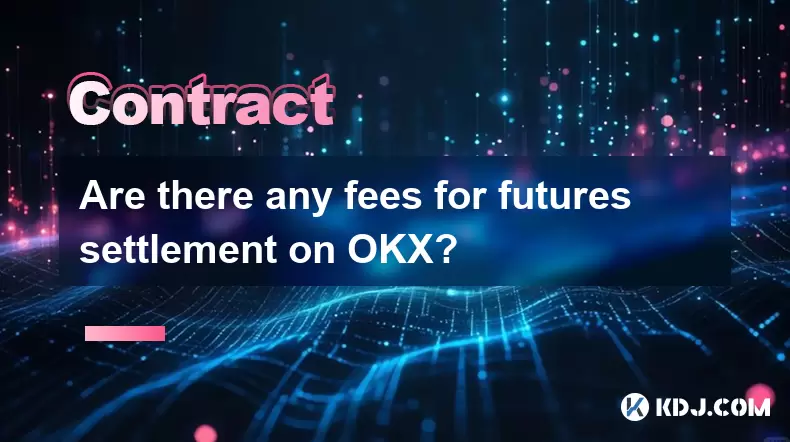
Are there any fees for futures settlement on OKX?
Aug 08,2025 at 05:35am
Understanding Futures Settlement on OKXFutures settlement on OKX refers to the process by which open futures contracts are automatically closed or mar...
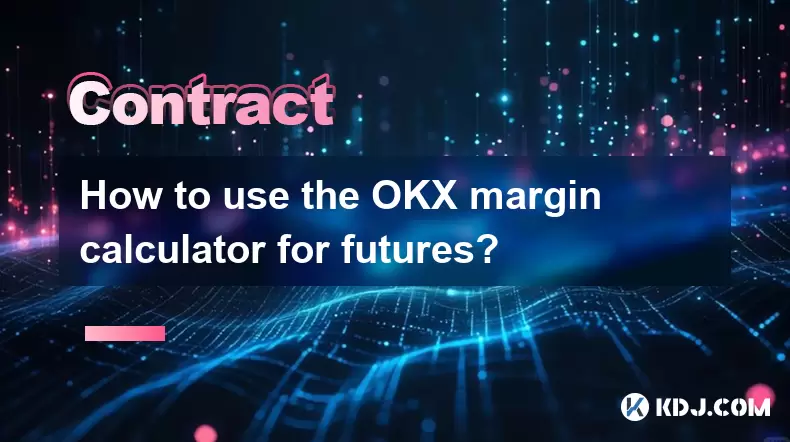
How to use the OKX margin calculator for futures?
Aug 08,2025 at 05:15am
Understanding the OKX Margin Calculator for FuturesThe OKX margin calculator is a specialized tool designed to assist traders in estimating the requir...

What are the specific maker and taker fees on KuCoin Futures?
Aug 08,2025 at 08:28am
Understanding Maker and Taker Fees on KuCoin FuturesWhen trading on KuCoin Futures, users encounter two primary types of fees: maker fees and taker fe...

What is the minimum deposit for OKX contracts?
Aug 08,2025 at 07:00am
Understanding OKX Contract Trading BasicsOKX is one of the leading cryptocurrency derivatives exchanges, offering a wide range of perpetual and future...

Where can I find the OKX trading calculator?
Aug 08,2025 at 07:49am
Understanding the OKX Trading Calculator FunctionalityThe OKX trading calculator is a powerful analytical tool designed to assist traders in estimatin...

What are the available trading pairs for OKX futures?
Aug 08,2025 at 08:49am
Understanding OKX Futures Trading PairsOKX is one of the leading cryptocurrency derivatives exchanges, offering a wide range of futures trading pairs ...

Are there any fees for futures settlement on OKX?
Aug 08,2025 at 05:35am
Understanding Futures Settlement on OKXFutures settlement on OKX refers to the process by which open futures contracts are automatically closed or mar...

How to use the OKX margin calculator for futures?
Aug 08,2025 at 05:15am
Understanding the OKX Margin Calculator for FuturesThe OKX margin calculator is a specialized tool designed to assist traders in estimating the requir...
See all articles

























































































